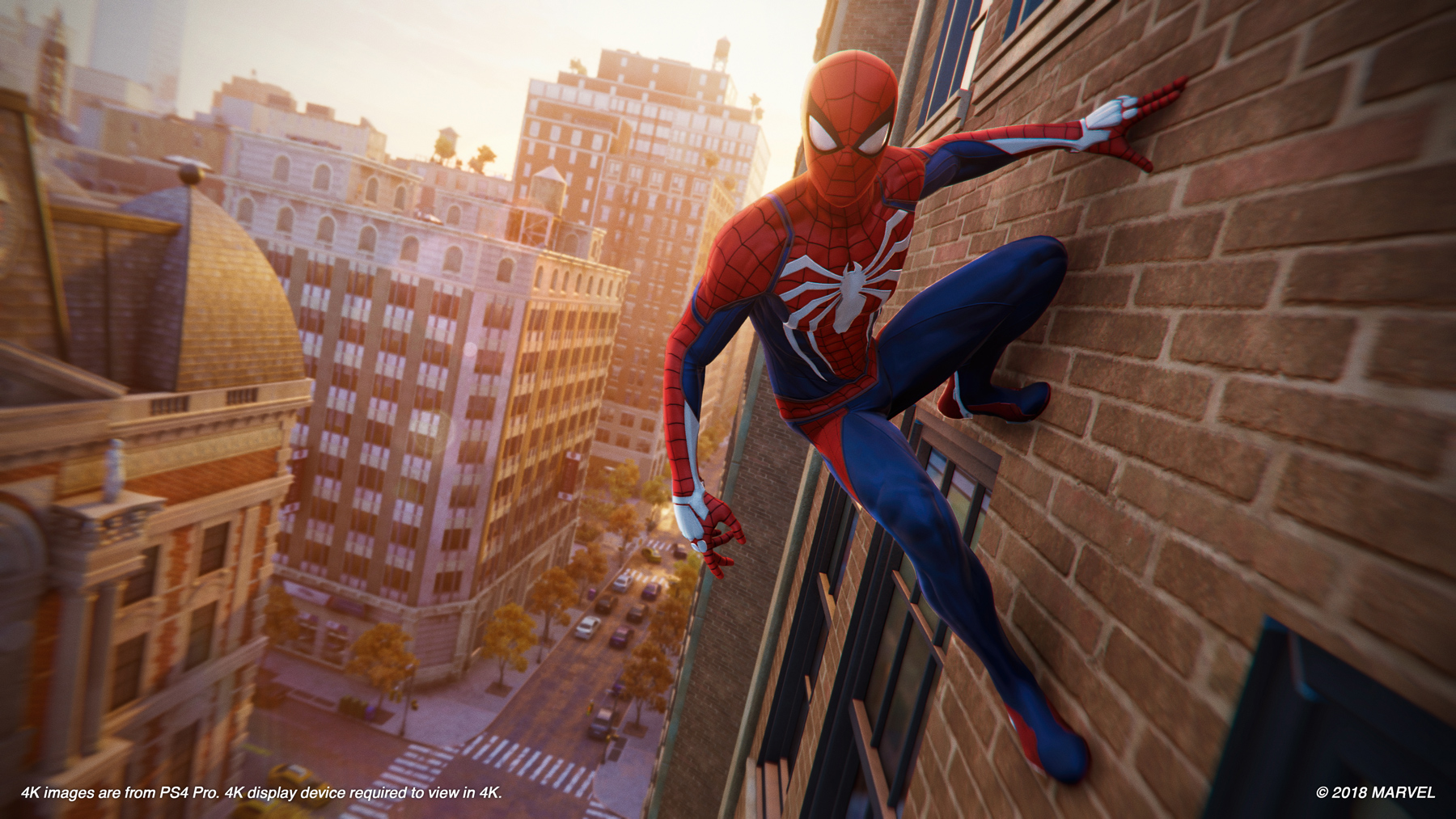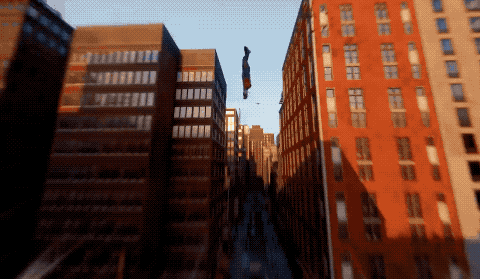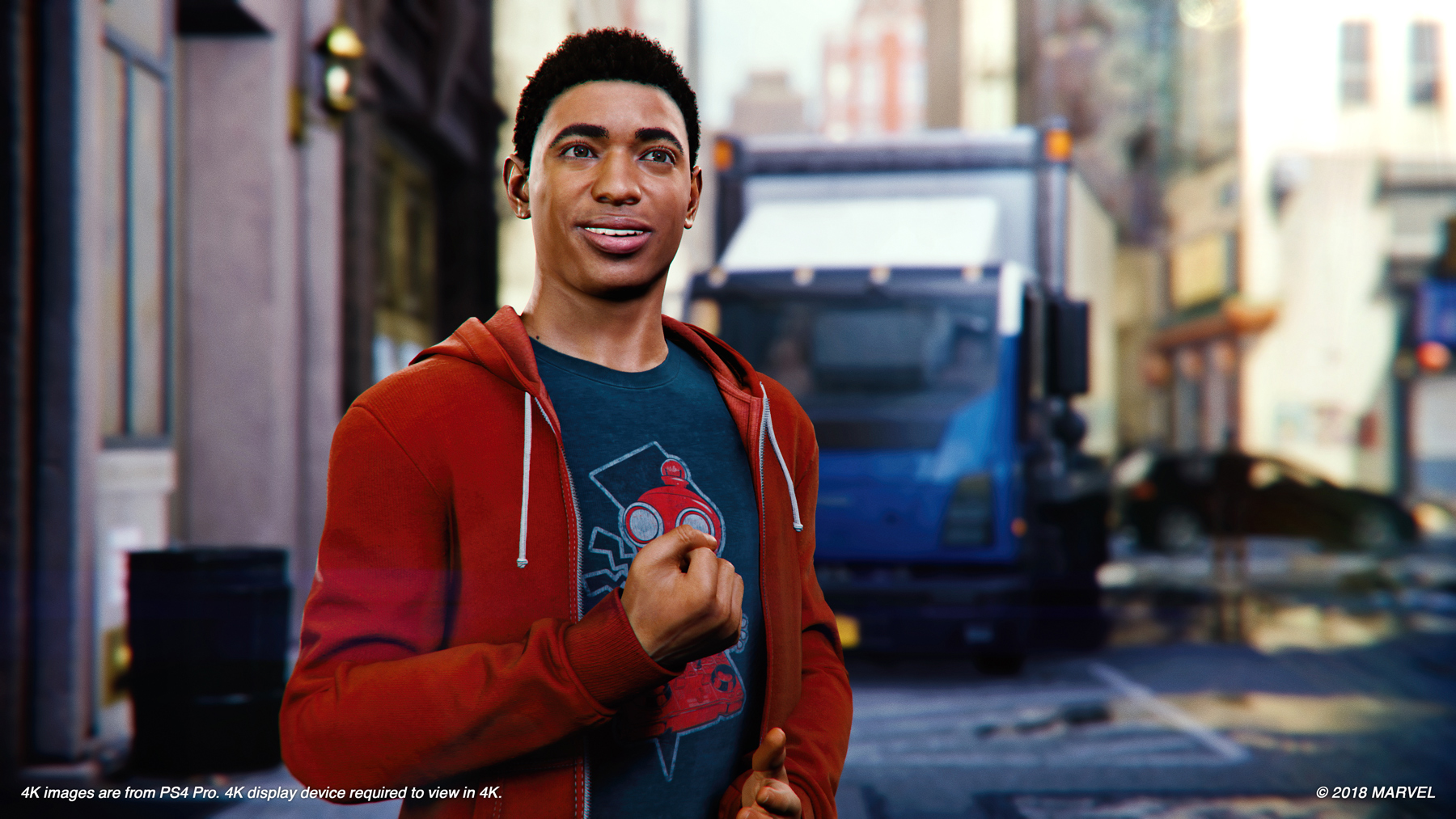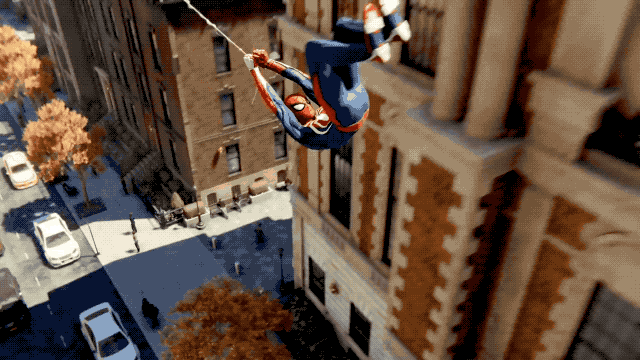 With its high rent, heavy traffic and unreliable subway system, New York can be a tough place to live. For many, it's a nonstop grind of work and sleep to make rent and pay the bills each month. It's also an exciting city full of diverse people and enormous skyscrapers. It's both aspects of Manhattan -- the hectic lifestyle and stunning architecture -- that make it a perfect fit for Spider-Man, a witty web-slinger who struggles to balance his work and love life with the responsibilities of a powerful superhero. The latest Spider-Man video game, developed by Ratchet & Clank studio Insomniac, treats New York as a character. A place that can pose real, relatable problems for Peter Parker and his alter-ego. Unsurprisingly, the video game version of New York isn't a one-to-one recreation. The general layout is the same, with Harlem to the north, Queensboro Bridge to the east and the financial district down south. Take a closer look, though, and you'll realize that the streets don't line up with Google Maps. When spontaneous crimes break out, you naturally want to help. The city is condensed so that you can swing from the top to the bottom of the map in roughly 15 minutes. That's critical because it solidifies the fantasy of Spider-Man's web-swinging. Throughout the campaign, Parker will receive phone calls that alert him to petty crimes and supervillain sightings in other parts of the city. He needs to get there quickly; if the masked vigilante took an hour to zip between boroughs, it wouldn't make sense (what kind of criminal needs more than an hour to rob a jewelry store?) and lose all sense of urgency. More importantly, the game is filled with everyday citizens. Swing low and you'll see New York's iconic yellow taxis driving people across town. Trucks ferrying goods from one warehouse to another and swarms of residents walking to work, college, or the nearest bagel store. If you stop pressing the R2 button, Spider-Man will immediately drop to street level. Then you're among the public -- the same New Yorkers that Parker has sworn to protect -- and watching their lives unfold first-hand. 
Web-slinging through New York never gets old. If you have some time to kill, you can jump on a car roof and take a quick tour of the city. Or saunter down the street and grab a copy of the Daily Bugle from a red newspaper dispenser. As you wander around, residents will naturally gasp and point. Most are delighted to see Spider-Man and will ask if you can lift something heavy, or fire one of your homemade web-shooters. Others will ask for a photo, explain that they were nearby during one of your recent supervillain battles, or criticise you for defeating a crime lord that was providing their now-unemployed brother steady work. Some New Yorkers will have a small, white prompt above their head, too. Hit the triangle button and they'll shake your hand, give you a high-five, or tell you about some suspicious-looking goons loitering nearby. You can't help but root for them. So when spontaneous crimes break out, you naturally want to help. Spider-Man might be en-route to a crucial story mission, but it's hard to ignore a mugging or a car crash with trapped passengers inside. Participating in these micro-moments will net you Crime Tokens, too, that are required to unlock powerful suits and gadget upgrades in the game. It's a subtle reinforcement of a line that Aunt May delivers early in the story: saving someone means saving everyone. Translation? Even the smallest heroic moments are meaningful. Many of the game's exhilarating set-pieces, too, take place in public view. When an out-of-control helicopter plummets toward the earth, or a driverless train hurtles into a commuter-filled platform, you understand the lives that are at risk. Spider-Man's task is not only to defeat menacing villains like Mr Negative -- it's to ensure nobody is harmed in the process. Street-level thugs rarely pose a challenge. It adds some much-needed tension to the proceedings. As much as I loved Rocksteady's Batman games, their depictions of Gotham always left me wanting. They were beautifully realized, with dark, stylized versions of Arkham Asylum, the Iceberg Lounge, and the Ace Chemical Processing Plant. But the lack of innocent bystanders, whisked away by convenient plot devices, made the city feel more like a giant arena in Arkham City and Knight. It was fun to explore, swooping and grappling over rooftops, but I yearned to see some everyday Gothamites milling about underneath me. Insomniac's new Spider-Man game doesn't have this problem. As the story slowly unfolds, and the villain's master plan pulls into focus, more and more people are put at risk. By the end of the campaign, you're fighting for literally everyone inside the city. Spider-Man isn't saving the world, admittedly, but millions of lives are on the line. The stakes are high, and you can't help but think about the consequences should Parker fail. It helps that you can play as Mary Jane Watson, an investigative reporter, and Miles Morales, a character that has become an alternate and equally beloved Spider-Man in Marvel comics (and soon, an animated movie). I won't spoil their sections, but they highlight what it must be like to live in a city filled with terrifying, super-powered beings. They also emphasize how, with quick thinking and a can-do attitude, normal people can accomplish extraordinary feats. That sentiment can be applied to Aunt May, too, and her exemplary efforts running a homeless shelter called F.E.A.S.T. Together, they underscore the idea that while New York isn't perfect, it's full of people who want to make it a better place. 
Miles Morales is an instantly likeable side character. The pressures of New York life can be seen in Peter's personal struggles. At the beginning of the game, he's broken up with Mary Jane Watson and left his life at the Daily Bugle to pursue a career as a scientist. He's constantly taking calls from his genius boss, Aunt May and Yuri Watanabe, Spider-Man's confidant and contact inside the NYPD. The web-slinger tries his best to help them all, swinging by the laboratory for government demonstrations, the F.E.A.S.T center for May's surprise birthday party, and various police buildings that have malfunctioning satellite towers. There's no actual time limit, but you can feel these competing demands weighing on Parker. Partway through the game, for instance, he goes home and discovers that his landlord has finally evicted him. The twenty-something spends the rest of the night tracking down a duffel bag that has been scooped up by waste collectors, and finding a safe place to crash for the night. There's also a moment where May rings Peter to check if they're still on for dinner the following night. He says yes, and a few missions later -- after the city has shifted from day to night and back again -- she calls to ask if he's running late. Of course, Parker immediately apologizes. Peter is a superhero, but he can't control time. Like everyone else in New York, he doesn't seem to have enough of it, either. My favorite side activity is photographing landmarks. They give you an excuse to tour the city as a digital tourist. Spider-Man is an open world game, so of course there are moments where you can freely explore the city. The map is littered with collectible backpacks and optional side-missions to break up the campaign's relentlessly high pressure moments. My favorite side activity, though, is photographing landmarks. They give you an excuse to tour the city as a digital tourist, running, swinging and finally framing famous landmarks such as Times Square and the United Nations Headquarters. They're all packed with detail and you can view them from any conceivable vantage point thanks to Spider-Man's unique abilities and maneuverability. Spider-Man's 'fast travel' system is the subway. Sadly, though, you can only enter a few buildings in the game. As I swung through Manhattan, I couldn't help but think of Yakuza, a Japanese role-playing series that lets you walk inside karaoke bars, bowling alleys and convenience stores. The maps in those games are drastically smaller than Spider-Man's New York City, but they're arguably richer and give you more opportunities to interact with locals. I would have loved, for instance, the option to enter a laundrette and sneakily wash my Spidey-suit as Peter. Or the ability to walk into a Starbucks and ask for a small latte as Spider-Man. The game's New York landmarks also include some welcome Marvel easter eggs. I won't spoil them, save for one: the Avengers tower. It's almost impossible to miss this enormous skyscraper as you look out across the Manhattan skyline. Dig deeper, though, and you'll find plenty of buildings related to specific Avengers and Defenders heroes. With its first Spider-Man game, Insomniac deftly balances the real New York with the one portrayed in Marvel comics. It's a playground, first and foremost, that's been designed to support the title's superb and liberating traversal system. The 'city that never sleeps,' though, is an architectural delight too. The studio has captured the look and, more importantly, the feelings that many people have about the city. It helps sell the long-running fantasy and troubles of Peter Parker, and should serve as an example for any developer looking to make a superhero game in the future. 
Images: Sony
via Engadget RSS Feed https://ift.tt/2oNWDiF |
Comments
Post a Comment